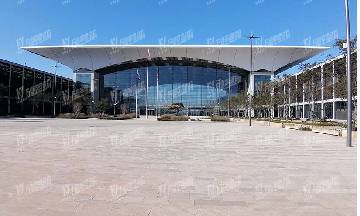Search
PVDF is a semi-crystalline polymer with (—CH2—CF2—) repeating units, has high mechanical strength, good chemical resistance and thermal stability, and excellent aging resistance, and shows when preparing flat plates, hollow fibers, or tubular membranes Good processing performance. PVDF membranes can be produced by non-solvent induced phase separation (NIPS), thermal-induced phase separation (TIPS), steam induced phase separation (VIPS), solution casting, electrospinning, and other methods. The membrane structure manufacturer will introduce the application of the PVDF membrane.
Water treatment and filtration
Water treatment is a major application field of PVDF membranes. There are many reports on the preparation, characterization, and application of PVDF membranes in microfiltration (MF), ultrafiltration (UF), membrane bioreactor (MBR), and other water treatment processes. And in recent years, some membrane manufacturers have developed a variety of PVDF membrane products for water purification.
Microfiltration (MF)
Generally, the MF membrane can separate particles of about 0.05 ~ 1.0μm, which is a typical method for removing bacteria, and an effective way to remove suspended solids to reduce water turbidity. Some researchers have used reverse osmosis technology to prove the feasibility of using PVDF hollow fiber microfiltration membranes for urban sewage treatment, and PVDF microfiltration membranes prepared by the TIPS method show good mechanical strength. The water treated by the system has stable quality and low turbidity. Within 15 minutes, the sediment density index and chemical oxygen demand (COD) meet the quality requirements of reverse osmosis supply water. Moreover, membrane permeability can be restored by reflux treatment with low concentration chlorine.
Ultrafiltration (UF)
The pore size of the UF membrane is 0.01 ~ 0.1μm, which is commonly used to remove viruses, emulsified fatty oil, metal oxides, colloids, proteins, and other large molecular weight materials from water and other solutions. The researchers used a commercial PVDF ultrafiltration membrane with a molecular weight cut-off (MWCO) of 100KD to treat the fermentation broth of methyl-chlortetracycline;
Membrane-bioreactor (MBR)
MBR combines traditional biological wastewater treatment with membrane separation and replaces traditional activated sludge treatment with secondary precipitation. The type of membrane used depends on the size of the contaminants contacted during the treatment process. The membranes used in MBR are basically typical ultrafiltration or microfiltration membranes. The researchers used MBR technology to use commercial PVDF ultrafiltration membranes to treat printing and dyeing wastewater, and the results showed more excellent performance than other biological treatment methods.
Recycling biofuel
The increasing energy crisis in recent years has promoted the development of renewable energy alternatives to fossil fuel technologies. Biofuels such as bioethanol represent the most successful renewable energy and have attracted the attention of many countries in the world. Recently, pervaporation is considered as a viable method for separating and recovering ethanol from fermentation broth. So far, the most successful case is the use of polydimethylsiloxane (PDMS) as a raw material membrane, in the solution diffusion model to achieve the purpose of recovering ethanol, and PVDF membranes mostly act as PDMS carriers in this process.
Composite membrane preparation
In addition to separation applications, PVDF membranes can also be used as scaffolds or carriers to prepare composite membranes. At present, most polyamide composite films (TFC) are prepared with PSF as a carrier because of their relatively high hydrophilicity, which is suitable for interfacial polymerization of polyamide in aqueous solution. However, PSF's low mechanical strength and poor resistance to some organic substances such as aromatic hydrocarbons, ketones, ethers, and esters limit the application field of the prepared composite membrane. PVDF membrane is used as a stent or carrier to prepare composite membrane Perhaps it has broad application prospects.
Lithium-ion battery separator
Lithium-ion batteries are considered to be the most promising large-scale power supply and energy storage devices in the future. The battery separator is a key component placed between the positive and negative electrodes to prevent electrical short circuits while allowing rapid transmission of charged ions. Lithium-ion battery requirements for separators include good chemical and thermal stability, low thickness, appropriate porosity, and pore size, and good mechanical strength. PVDF membrane is a material that can be used as a separator for lithium-ion batteries. Some researchers have prepared microporous PVDF membranes through the TIPS method and studied their feasibility as lithium-ion battery separators. The results show that the PVDF membrane with a uniform sponge-like microstructure exhibits high elastic coefficient and stress, and the electrolyte exhibits good electrochemical stability.

ETFE Membrane Structure
Copyright © Zhejiang Wanhao Group Co., Ltd. All Rights Reserved.
Sitemap | Technical Support 